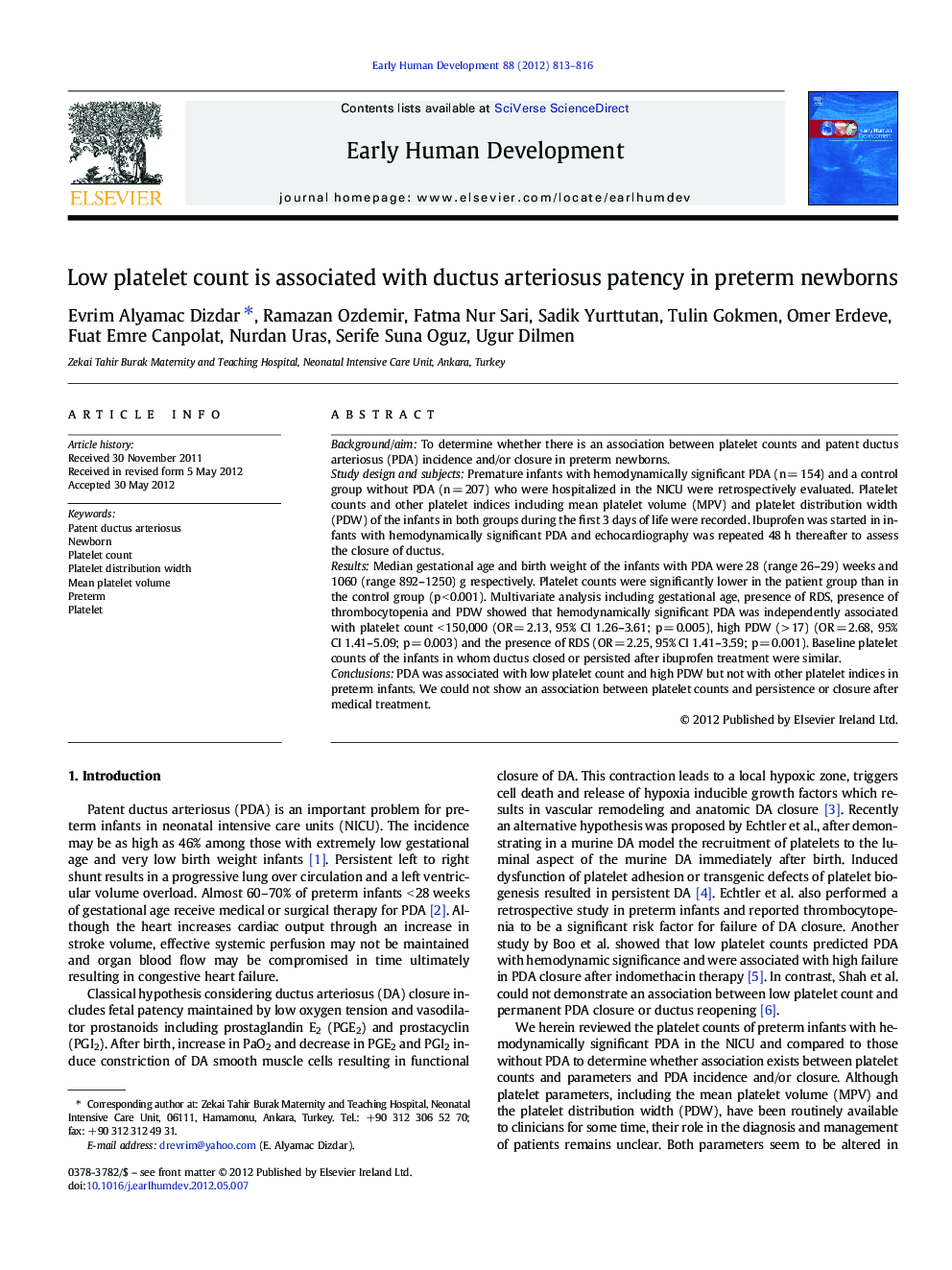| Article ID | Journal | Published Year | Pages | File Type |
|---|---|---|---|---|
| 3918370 | Early Human Development | 2012 | 4 Pages |
Background/aimTo determine whether there is an association between platelet counts and patent ductus arteriosus (PDA) incidence and/or closure in preterm newborns.Study design and subjectsPremature infants with hemodynamically significant PDA (n = 154) and a control group without PDA (n = 207) who were hospitalized in the NICU were retrospectively evaluated. Platelet counts and other platelet indices including mean platelet volume (MPV) and platelet distribution width (PDW) of the infants in both groups during the first 3 days of life were recorded. Ibuprofen was started in infants with hemodynamically significant PDA and echocardiography was repeated 48 h thereafter to assess the closure of ductus.ResultsMedian gestational age and birth weight of the infants with PDA were 28 (range 26–29) weeks and 1060 (range 892–1250) g respectively. Platelet counts were significantly lower in the patient group than in the control group (p < 0.001). Multivariate analysis including gestational age, presence of RDS, presence of thrombocytopenia and PDW showed that hemodynamically significant PDA was independently associated with platelet count < 150,000 (OR = 2.13, 95% CI 1.26–3.61; p = 0.005), high PDW (> 17) (OR = 2.68, 95% CI 1.41–5.09; p = 0.003) and the presence of RDS (OR = 2.25, 95% CI 1.41–3.59; p = 0.001). Baseline platelet counts of the infants in whom ductus closed or persisted after ibuprofen treatment were similar.ConclusionsPDA was associated with low platelet count and high PDW but not with other platelet indices in preterm infants. We could not show an association between platelet counts and persistence or closure after medical treatment.
